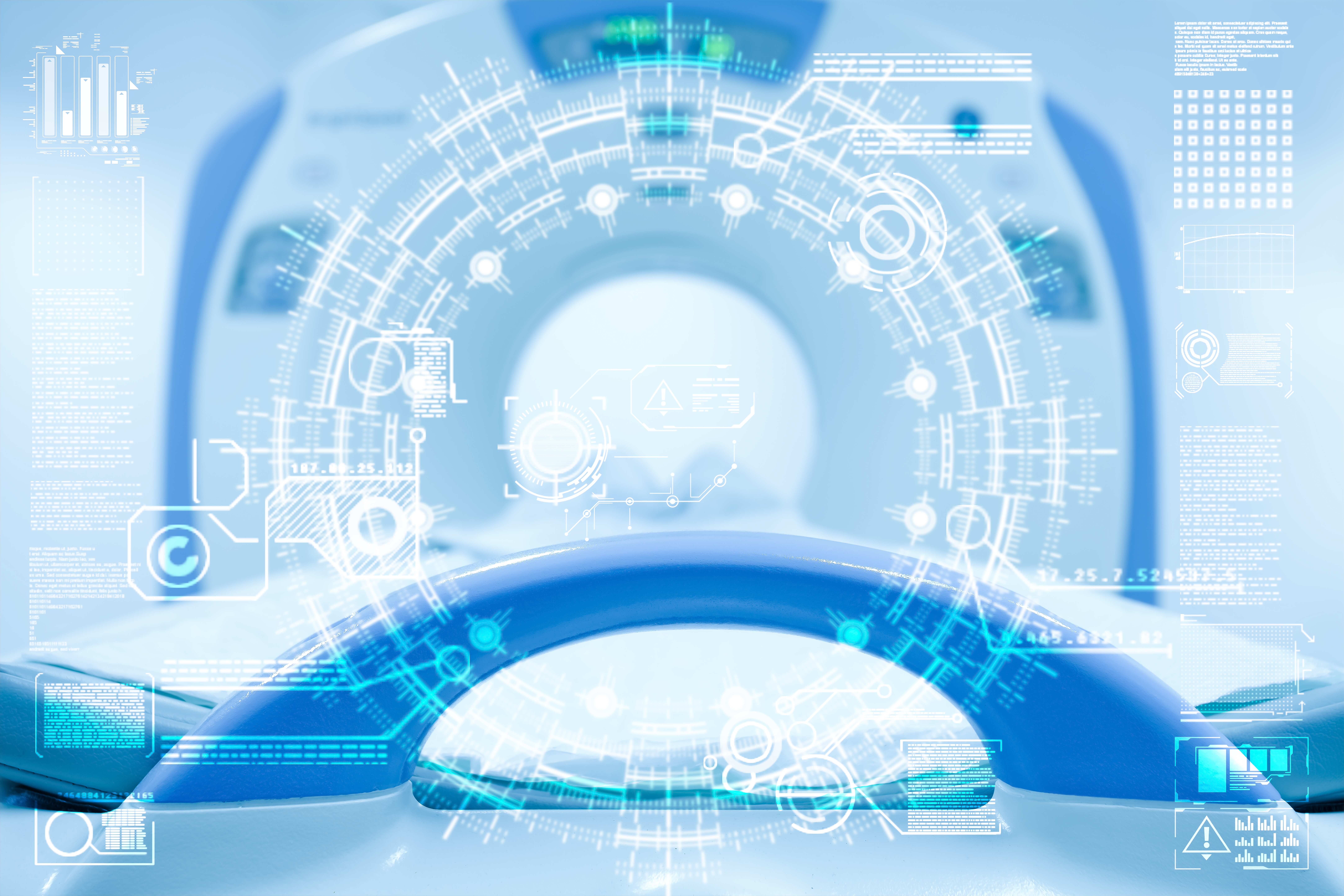During magnetic resonance imaging (MRI) exams, the technologist images the patient’s area of interest for the radiologist to review. The magnet is a part of the masterpiece of the scanner’s design and can affect the image quality. A major design component of the MRI system is the homogeneity of the magnet. Let’s explore the importance of a large homogeneous field, which enables the collection of high-quality MR images at the edge of the field of view.
The parts of an MR scanner
There are several main parts of an MRI scanner.1 These include the magnet, gradient coil, gradient amplifier, radiofrequency (RF) coils, RF amplifier and receiver. The magnet creates the required large magnetic field. The gradient coil driven by the gradient amplifier creates minor linear magnetic field changes needed for spatial information. Finally, an RF coil driven by the RF amplifier stimulates the patient and an RF coil is subsequently used to receive the resultant signal, like an antenna for a TV.
When in an MRI system, the patient is inside of the magnet and gradient coil and surrounded by an RF coil. There are many types of RF coils. Certain areas of the body, such as wrists, elbows, knees and head may require dedicated RF coils.2 These coils may be shaped like the body part being imaged or have more flexible, versatile and multi-purpose uses.
The isocenter
The isocenter is one of the most important areas of the magnetic field produced by a magnetic resonance scanner. Technologically speaking, the isocenter is the center of the magnet.3 By design, at isocenter the magnet is the most homogeneous, the gradient fields are the most linear and the large RF coils have the strongest signal.
Homogeneous is the Latin word which describes the uniformity of something. In the case of a magnetic field, homogeneity refers to how consistent the magnetic field is over the field of view. Decreased homogeneity at the edge of a magnet means the image may be degraded or lose resolution.
Magnet homogeneity
As you move away from isocenter, the magnetic field starts to degrade. Due to this, it can impact the quality of resulting images. Imaging at or near isocenter may be desirable to achieve high-quality imaging results but is not always possible. Therefore, scanners that can image with good quality at the edge of the field of view are often necessary.
Some body parts are not able to easily occupy the isocenter of an MR scanner. Orthopedic medicine is especially impacted. Orthopedics is the branch of medicine that deals with the musculoskeletal system, such as in the elbows, wrists, knee, ankle, shoulder and foot. Although it may be possible to position the patient in such a way that the body part being imaged is at isocenter, these positions can be uncomfortable.4 Patients who are uncomfortable may be more likely to move, which in turn may cause motion artifacts, longer acquisition times or repeat scanning.
To address the need of imaging outside of isocenter, different MR manufacturers have integrated innovative technology, which helps to control the rate of degradation among their magnets. Ones with less degradation at the edge of the magnet mean a more consistent magnetic field, may produce clearer images inside and outside of isocenter. These scanners allow imaging of the desired anatomy, including the musculoskeletal system outside of the isocenter at nearly the same quality as within. Some larger oncologic images also require a larger field of view which includes the isocenter and the edge of the magnet. Patients and the region of interest could be imaged from comfortable positions using the scanners with the more consist and homogeneous magnetic field.
Conclusion
Magnetic resonance imaging helps physicians monitor different medical conditions through the images the MR scanner provides. Therefore, it is imperative for the images to be as accurate as possible. A major factor impacting the quality of MRI images is magnet homogeneity. Using an imaging system that has better homogeneity away from isocenter may reduce image artifacts and provide the high image quality the physician requires to monitor their patients.
View the 2019 MRI Buyer's Guide.
References
1. Todd A. Gould and Molly Edmonds. "How MRI Works." HowStuffWorks.com. 25 October 2010. Web. 6 February 2019. <https://science.howstuffworks.com/mri.htm>.
2. "Radiofrequency Coils." MRIQuestions.com. Web. 6 February 2019. <+http://mriquestions.com/rf-coil-functions.html>.
3. Kristen Coyne. "MRI: A Guided Tour." NationalMagLab.org. 20 September 2018. Web. 6 February 2019. <https://nationalmaglab.org/education/magnet-academy/learn-the-basics/stories/mri-a-guided-tour>.
4. Dustin Johnson, et al. "Approach to MR Imaging of the Elbow and Wrist: Technical Aspects and Innovation." Magn Reson Imaging Clin N Am. August 2015; 23(3): 355-366. Web. 29 January 2019. doi: 10.1016/j.mric.2015.04.008.

